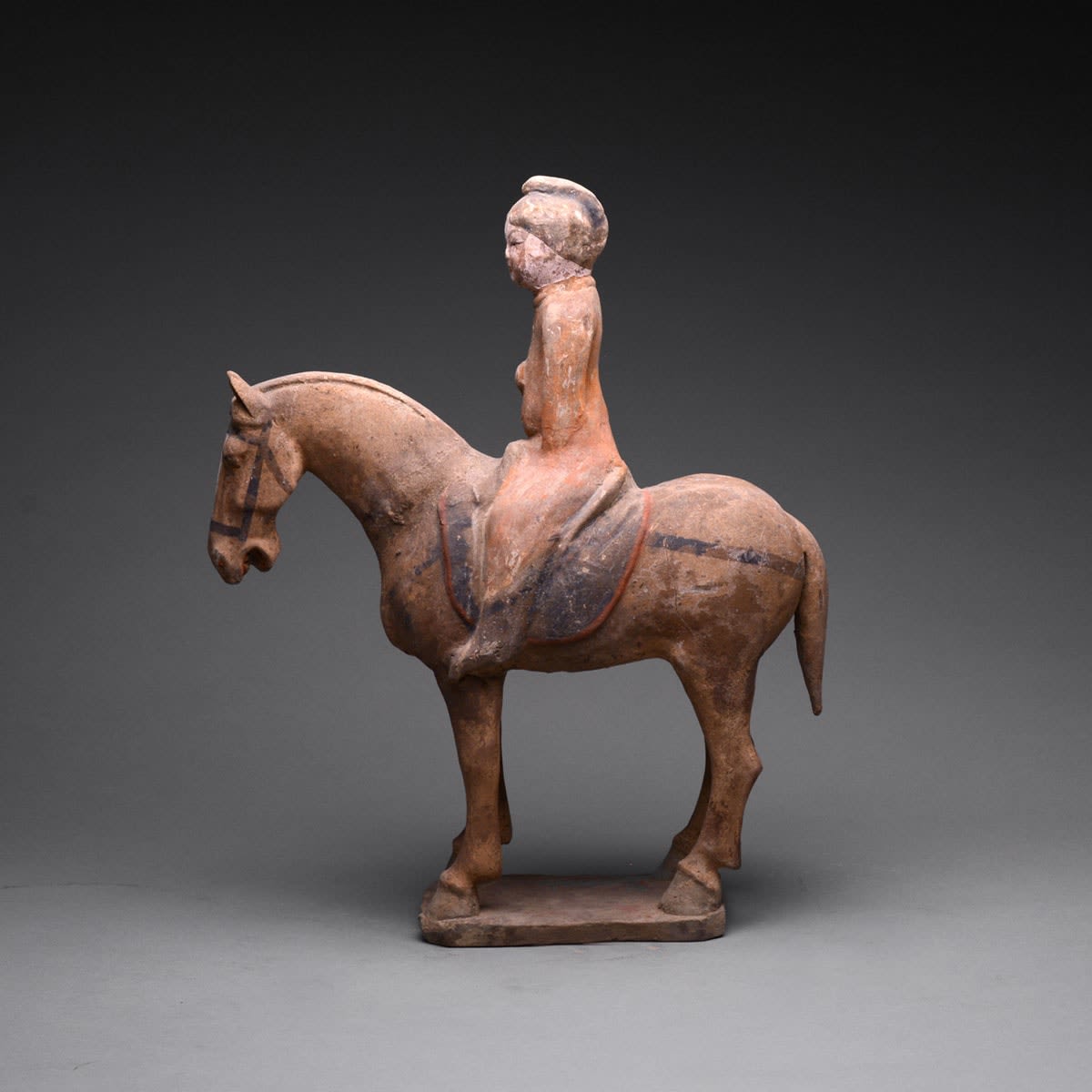Tang Polychrome Horse and Female Rider, 618 CE - 906 CE
Painted Terracotta
height 34.3 cm
height 13 1/2 in
height 13 1/2 in
H.967
Further images
During the Tang Dynasty, horses were revered creature, considered relatives of the mythical dragon. This veneration was well earned, for the speed and stamina of these majestic animals ensured the...
During the Tang Dynasty, horses were revered creature, considered relatives of the mythical dragon. This veneration was well earned, for the speed and stamina of these majestic animals ensured the protection of the northern borders against barbarian invaders as well as enhancing communication capabilities between far away provinces, thereby aiding in the expansion of the empire. The need to import horses from Central Asia influenced the creation of the Silk Road. Thus, they were also prized for their rarity. Naturally then, horses became a status symbol for the aristocratic elite. Polo and other equestrian activities were popular pastimes. This sculpture, depicting a lady-in-waiting riding on the back of an ochre-colored horse, reveals this connection between nobility and the horse. Her dress still retains a majority of its original bright orange polychrome. The horse’s numnah and harnesses are painted black, as are his hooves. His nose and mouth are highlighted in vibrant red. We can imagine this lady prancing around on this horse, taking part in an important ceremony or polo match. Discovered buried inside a tomb, this work was supposed to accompany the deceased throughout the afterlife. The striking beauty of this work is even more impressive, considering that it was created specifically for interment and was not supposed to be seen by the living. Today, we marvel in the beauty of this sculpture as much as its tremendous history and intriguing legacy.









